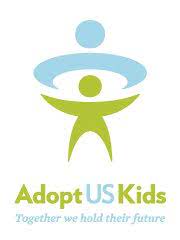Many families come to the attention of child welfare because of unmet basic needs, such as economic hardships, food instability, and other poverty-related challenges that weigh on family mental health and well-being. Child welfare and other researchers are increasingly recognizing … Read More
Interdisciplinary

Free Center for Disease Control App Tracks Childhood Development
While it is true that not all children grow and develop at the same speed or on the same trajectory, we do know that the first years of a child’s life are a period of rapid brain development that directly … Read More

Promoting Healthy Relationships Among Youth in Child Welfare and Other Systems
It is important for young people to understand how to navigate healthy romantic relationships. However, much of the existing literature on healthy relationships among youth in foster care and related systems focuses on relationships with birth, foster, and adoptive families … Read More

Study on Child Self-Report Measures for Screening and Assessing Family Violence
A recent study, “Child-Reported Family Violence: A Systemic Review of Available Instruments,” explores the role of children in reporting family violence. Specifically, the reviewers identify and appraise available child self-report measures for screening and assessment of family violence in both clinical and … Read More

Study Examines How START Program Mitigates Co-Occurring Substance Use and Child Maltreatment
Families involved with child welfare can often benefit from support from overlapping systems and services. With the well-researched correlation between child maltreatment and substance use, substance use treatment may positively affect parents’ abilities to care for their children. A recent … Read More

New Brief on Child Welfare Prevention Through Service Integration
A recent report from the Office of the Assistant Secretary for Planning and Evaluation (ASPE) underscores the importance of service integration in preventing child maltreatment and supporting vulnerable youth. The report, part of the Case Studies in Supporting Prevention Through Human Services … Read More

Using Technology to Support Families Who Experience Family Violence
Today’s technology is an important tool that can help safeguard families living in difficult or sometimes violent life situations, as well as the professional staff who work to protect families in vulnerable situations. CCWIS Functionality The automated functionality of the … Read More

Brief Addresses Secondary Traumatic Stress in the Workforce
The Quality Improvement Center for Workforce Development (QIC-WD), a multisite child welfare workforce research grant funded by the Children’s Bureau, developed Secondary Traumatic Stress: Definitions, Measures, Predictors, and Interventions, a resource focused on the emotional duress associated with and often considered … Read More

There’s a Place: How Parents Help Their Children Create a Capacity for Playfulness and can it be Sustained across the Lifespan
This article traces the ways that playfulness shifts and grows with the child and with the parent-child dyad. It also speaks to the paradoxical manner in which feeling essential as a parent is both necessary at the beginning of the … Read More

Supporting a Positive Racial Identity for Black, Indigenous, and Other Children of Color in Transracial Placements with White Parents
Part 1: Setting the stage This guide is designed to help parent group leaders facilitate discussions with their groups about their responsibilities as they parent children of color. These discussions will specifically help white parents and caregivers understand their critical … Read More
